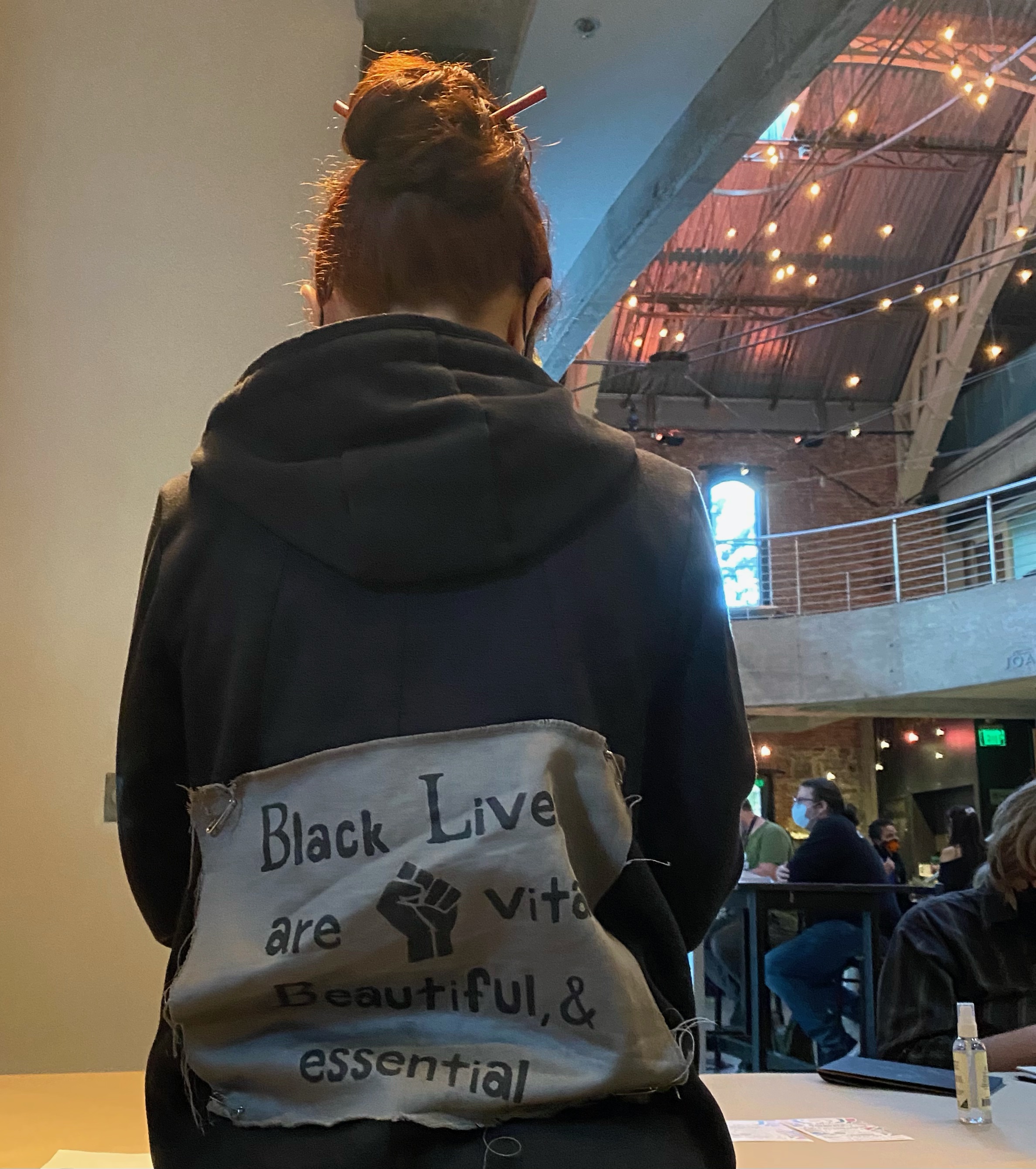This year, Portland has been the center of much discussion and media attention regarding its Black Lives Matter protests and instances of police brutality upon attendants. Conservative outlets, such as PJ Media, have framed the city as a ceaseless battleground, and news stations across the country have broadcast images of property destruction and looted local businesses. Not a lot has been done to differentiate the peaceful protesters who constitute the majority of these demonstrations from aggressive outliers.
The Black Lives Matter movement in Portland is not limited to these occasional acts of violence or even nightly protests—it also manifests in various events and demonstrations that occur throughout Portland nearly every day.
I was lucky enough to attend a BLM art therapy event on Nov. 11, curated by a handful of organizers—primarily local activist and community leader Linneas Boland-Godbey with help from Snack Bloc PDX. Boland-Godbey is currently gathering funds from supporters, through Venmo donations, in order to help fund a trip to Seattle, where he intends to team up with other activists in the Capitol Hill district. Seattle, like Portland, has been a major hub for Black Lives Matter protests since George Floyd’s murder this past spring.
The event took place at the Portland Center Stage at the Armory in the Pearl District—a spacious venue with comfortable, modern-industrial decor. Many people attended the event, filtering in throughout the afternoon to sit at socially-distanced tables and paint, draw or create art of all kinds while surrounded by like-minded individuals. Everyone was in the same room for the same purpose: to participate in community activism and decompress through creative expression.
I spoke with Boland-Godbey, a Portland State alum, during the event. This was not the first BLM art therapy event he’s organized; Boland-Godbey used to work for the Old Town Community Association, advocating for various underrepresented communities in the area, and started putting together activism-related arts events through his work there.
“We did art events in unused, gentrified areas,” Boland-Godbey said. “Office spaces, downtown areas. And it was kind of set up like this—people would showcase their art and get more connected in the arts scene.”
“I liked it because, I feel like when it comes to First and Last Thursday,” Boland-Godbey continued, referencing regular art festivals in Portland, “they don’t represent people who are minorities in any way, shape or form.”
Creating a regular, artistic event focused on underrepresented communities became a continuous goal for Boland-Godbey. His first event proved to be extremely successful, with over 300 people in attendance. However, he was forced to halt event plans back in March when COVID-19 hit the United States. After a few months had passed, Boland-Godbey started experimenting again with artistic activism ideas in early July. He started bringing artwork and art supplies to demonstrations at the Justice Center and was thrilled with how many people participated, but soon had his art supplies confiscated in a police sweep, despite only possessing acrylic paints and chalk.
“I was like, ‘What are you doing?’” Boland-Godbey said. “We were just doing art and not destroying anything. We didn’t even bring spray paint. So I decided we were going to host the event at Irving Park, and everyone [who came] had a good time.”
The Black Lives Matter movement has become the source of much debate in the U.S.—and the polarization has only become more obvious and intense as 2020 has dragged on. When asked how art therapy events and artistic endeavors could help change some peoples’ negative impressions of the BLM movement, Boland-Godbey said the most important thing he can do is challenge the misconception that everyone involved with routine activism is committing acts of destruction.
“There are protests all over town, every day,” Boland-Godbey said. “This movement is not just one thing or seasonal. We’re advocating for Black lives. It doesn’t matter if Joe Biden is president or not—you better still be out there protesting with us in any way, shape or form.”
If there’s a single takeaway from this event, it’s that activism does not adhere to any singular form. An event like this facilitates direct interaction and conversation between activists in a restorative environment, thus encouraging more successful community organizing.
“This is just a good way to express ourselves—it’s therapeutic,” Boland-Godbey said. “Especially right after the election, we needed that.”
Boland-Godbey graduated from PSU in 2019, and I wrapped up our interview by asking him if he had any advice for activists in the PSU community specifically.
“I would say to focus on disarming PSU,” Boland-Godbey said, “because the Jason Washington family really needs help right now.”
“[PSU] said [it was] going to disarm, [and it] better keep that up because [PSU] has a way of not doing what they say. Just because you have a Black police chief does not absolve racism, so you better advocate for Jason Washington’s family. I know them and they’re amazing people.”
Boland-Godbey stressed his goal for these art therapy events is for participants to leave feeling happy and motivated, and that attendees will be inspired to create more art and continue or expand on their efforts in activism. Art therapy events like this can be utilized to redefine the activism itself, and its popularization could paint a drastically different picture of Portlanders—and those in the U.S. in general—who stand up for Black lives and other marginalized communities.
